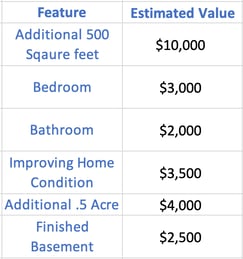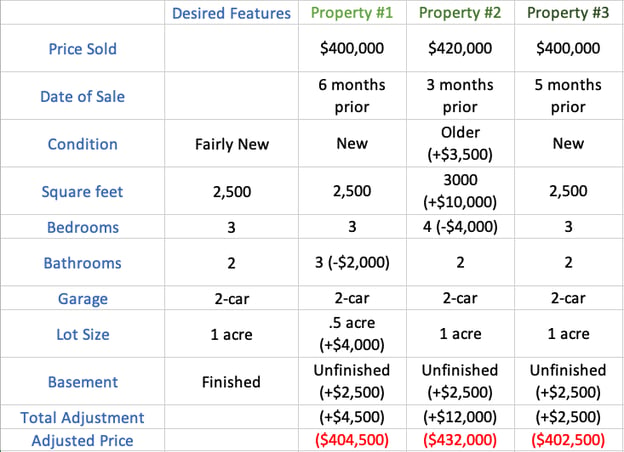One of the first steps when working with home sellers is setting the listing price of a home. When working with buyers, that first step is usually checking the value of a home before making an offer to purchase.
A home’s current worth can be difficult to pinpoint, and the best and most common way to find out how much a home is actually worth is by running a comparative market analysis.
How to Do a Comparative Market Analysis
Step 1: Know the neighborhood.
A comparative analysis involves more than just doing the math on prices for houses in your area. In fact, an agent’s familiarity and experience with the local market can significantly affect a CMA’s accuracy.
To set the right price, you need to be familiar with the neighborhood and knowledgeable about the historical, current sale, and rental value of real estate in that area.
There’s been increasing popularity of single-family rentals in North America over the past decade — almost 50,000 of them built to rent in 2020, compared to about 14,000 built in 2010. If you’re not already acquainted with the neighborhood, check it out in person or via Google Street View.
Assess the overall quality of the neighborhood and identify the attractive and not-so-attractive blocks. Examine its proximity to parks, school districts, and other amenities.
Look at the curb appeal of homes in the area and identify any negative characteristics such as proximity to a noisy highway or dilapidated commercial buildings.
Step 2. Pre-assess the listing property online.
If the property in question is already listed, browse the listing online before viewing it with your client. This will give you a preliminary idea of what to expect before visiting it in person.
Gather as much information as you can about the property, including the year it was built, home size, lot size, construction type, architecture, and condition. Being informed will give you an advantage for your first meeting with the seller.
Step 3. Assess the property in person.
Visit the property in person to gather detailed information needed to prepare an accurate report.
Note its most important metrics, such as size, layout, age, condition, finishes, and landscaping, as well as any features that might add value, including a pool, finished basement, large garage, or oversized lot.
And, be on the lookout for issues that might affect the price negatively, like a roof in need of repair, poor overall condition, lack of central air conditioning, or other hidden issues.
Step 4: Select comparable properties in the area.
Choosing the best three or four comparable properties in the area is crucial for the accuracy of a comparative market analysis.
To make a selection, scan MLS, Zillow, Property Shark, or Redfin for properties recently sold or closed on, active listings, pending sales, and expired listings.
Then, consider these three important factors:
- When the comparable property sold: In a hot real estate market where prices rise fast, the price of a home sold a year prior may be irrelevant today. The CMA report should examine properties with a date of sale as current as possible — ideally within the previous few weeks. If it’s a slow market and you’re using comps sold several months prior, you might need to adjust the prices based on how the market has evolved.
- Where it’s located: The location of the comps selected should be as close to the subject property as possible. It’s best if they’re in the same neighborhood, subdivision, and school district, or within one mile of the listed property. Residential areas can vary from one block to the next. Some properties are located next to a quiet park, while others in the same neighborhood might be next to a busy road. These subtle changes can lead to significant price differences.
- What its main features are: You should compare your listing against homes that have characteristics that are as similar as possible to the one you’re reviewing. This applies particularly to the number of bedrooms, baths, square footage, and lot size. If the selection size is generous, use properties with similar construction types and architectural styles. Homes with similar features are ideal, but this might not always be possible unless the home is located in a developed subdivision where all homes look the same.
Step 5: Prepare the comparative market analysis report.
Using a template report form provided with your MLS or other software solutions, enter the information you gathered for the comparable properties selected and for your subject property.
Some price adjustments might be necessary to compensate for the differences in structure and to better match the subject property. For example, if the property you’re pricing has three bedrooms and the one you’re comparing it to only has two, you’ll need to adjust the price accordingly.
Now it’s time to do the math. After making the necessary adjustments, divide the sold (adjusted) price of each property by its square footage to find the sold price per square foot.
Sold price of each property / square footage of each property = sold price per square foot
Then, multiply the calculated average price per square foot for your comparable properties by the square feet of your subject property to obtain its current market value.
Average price per square foot of comparable properties x square footage of subject property = current market value
To recap, your CMA report should contain:
- The addresses of the subject and comparable properties
- Information and characteristics of each property
- Sold prices of the comparables
- The total square footage of each home
- The adjustment values for lot sizes, bedrooms, baths, and garages
- The adjusted sold prices
- The dollar-per-square-foot value
- The subject property value
The final calculated listing price might need to be further modified, depending on how competitive the market is at the time. A high inventory of homes for sale could force prices down, while a low inventory might push your asking price upward.
Comparative Market Analysis Report Sample
When you have identified about three properties that have been sold in the same area with similar features, it’s time to put them into a spreadsheet for analysis. The following example is simplified and not based upon true market data:

With each property itemized, an agent can provide a breakdown of the cost of each feature and how it affects each home’s overall value.

The sales price of each of the three properties is adjusted to be nearly identical to the value of your desired property value. The more desirable features are deducted from the sales price of each property, while the less desirable are added.

The adjusted sales prices show the range of an appropriate offer of $402,500-$432,000. This range will reflect the offer price of the desired property with features they want.
During this part of the analysis, it’s important to weigh each property based on its similarity to the desired features. Property #2 had the most adjustments, so it is given the lowest weight. Property #3 had the least amount of adjustments and is given the highest weight. Once the weights are identified, the adjusted prices are multiplied by weighted value and added together to determine the offer.

The more accurate estimation for an asking price in this situation is $409,000 based upon similar homes in the area you found on the market.
Use a CMA to Your Advantage
Learning and understanding the purpose of comparative market analysis can save you money during your next house hunt — or earn you more when you decide to sell. Either way, doing your research and having the numbers to back it can help you negotiate a price more effectively.
Editor’s Note: This post was originally posted in November 2018 and has been updated for comprehensiveness.

![]()


